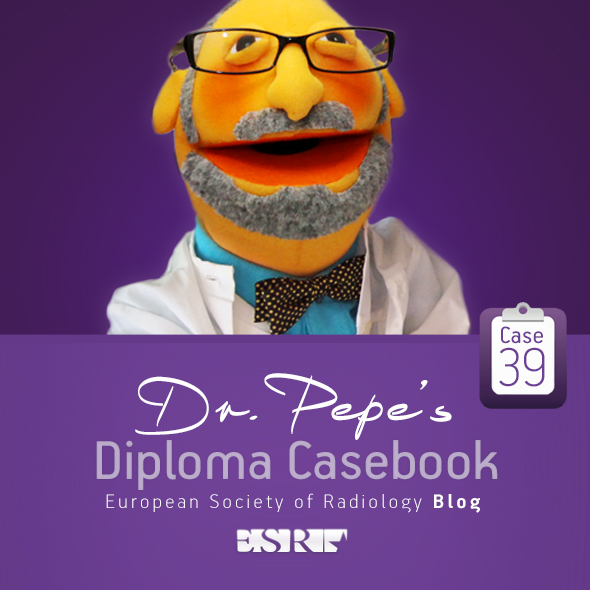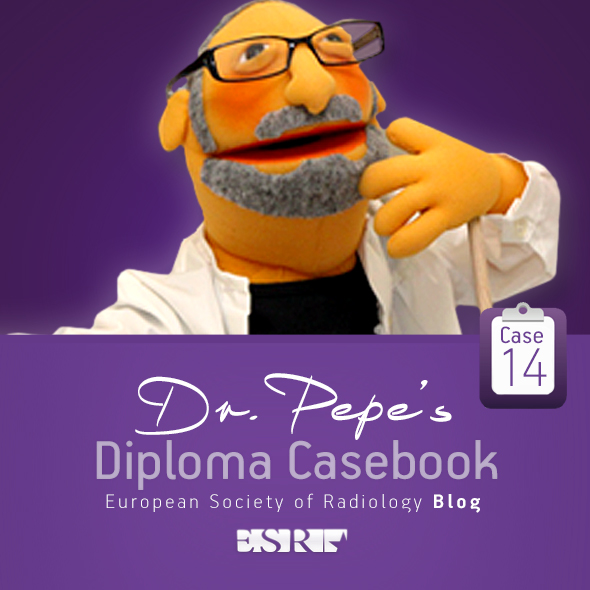
B-0215 Ultrasound elastography in the diagnostic assessment of axillary lymph nodes in women presenting to a breast imaging centre
L. Sim, L. Leong | Thursday, March 7, 14:00 – 15:30 / Room F2
Purpose: To evaluate the performance of elastography in distinguishing benign and metastatic axillary lymph nodes.
Methods and Materials: 67 women with 72 sonographically visible axillary lymph nodes undergoing biopsy at our breast imaging centre were evaluated independently with conventional ultrasound, elastography and combined ultrasound and elastography (CEUS). The elastogram was classified as benign or malignant, based on the strain pattern, the length and area ratios of the lesion seen on elastography versus ultrasound. Validation of radiological diagnosis was by histopathology. The sensitivity, specificity, PPV, NPV and accuracy of each test were compared individually and with CEUS. To obtain a parameter for diagnostic performance, ROC curves were plotted.
Results: Of the 72 axillary lymph nodes biopsied, 33 had metastases and 39 were benign. The sensitivity, specificity and accuracy of conventional ultrasound were 93.9%, 30.8% and 59.7%, respectively. The sensitivity, specificity and accuracy of elastography were 93.9%, 97.4% and 95.8%, respectively, and that of combined ultrasound and elastography were 97 %, 92.3% and 94.4%, respectively. The sensitivities of all 3 tests were similar but the specificity and accuracy obtained by elastography and CEUS were significantly better than conventional ultrasound (P<0.0005). Elastography correctly diagnosed 96 % of histologically benign lymph nodes which were deemed malignant on ultrasound.
Conclusion: The use of elastography alone or combined with ultrasound has a higher specificity and accuracy than conventional ultrasound in evaluating axillary lymph nodes. Given the high specificity of elastography, biopsy could have been avoided in 96 % of cases classified as malignant on ultrasound but benign on elastography.

B-0688 One-to-one comparison between digital mammography and digital breast tomosynthesis using a fully automated software: breast density underestimation on digital breast tomosynthesis varies in different BI-RADS classes
A. Tagliafico, S. Airaldi, F. Cavagnetto, B. Bingotti, S. Tosto, D. Astengo, M. Calabrese | Sunday, March 10, 10:30 – 12:00 / Room F2
Purpose: To compare breast density on digital mammography (FFDM) and tomosynthesis (DBT) according to different BI-RADS classes (four classes from 1 to 4) with an automated software.
Methods and Materials: IRB approval and written informed consent were obtained. Digital breast tomosynthesis and digital mammography were obtained in the same patient. A total of 160 consecutive patients (mean age years: 50±14; mean BMI: 22 ± 3) were included. One-to-one comparison between FFDM and DBT was made with a fully automated software previously validated. Statistical analysis was performed with two-tailed t-test for paired data using statistical software.
Results: In BI-RADS class 1, digital mammography overestimated breast density of a 16 %. In BI-RADS class 2, digital mammography overestimated breast density of a 11.9%. In BI-RADS class 3, digital mammography overestimated breast density of a 3.5%. In BI-RADS class 4, digital mammography overestimated breast density of a 18.1%. The differences resulted highly statistically significant (p<0.0001). There was a good correlation between BI-RADS categories and the density evaluated with digital mammography and digital breast tomosynthesis (r=0.56, p <0.01 and r=0.48 p<0.01).
Conclusion: Breast density values were underestimated by DBT in comparison to FFDM with a non-linear relationship in the different BI-RADS classes. This data should influence clinical and research studies dealing with breast density as a qualitative biomarker.

B-0680 Texture analysis of malignant breast tumours: is a differentiation of ductal carcinoma in situ, invasive ductal and invasive lobular breast cancer possible?
T. Knogler, K. Pinker-Domenig, N. Perry, S. Milner, K. Mokbel, M.E. Mayerhoefer | Sunday, March 10, 10:30 – 12:00 / Room F2
Purpose: To evaluate the ability of texture features (TF), to differentiate between ductal carcinoma in situ (DCIS), invasive ductal carcinoma (IDC) and invasive lobular carcinoma (ILC) of the breast on full-field digital mammograms (FFDM).
Methods and Materials: 110 screen detected and histopathologically verified breast cancers (27 DCIS, 73 IDC, 10 ILC) imaged with FFDM in standard views were included in this study. For each lesion, a region of interest (ROI) was manually defined, which covered the lesion as well as a rim (1cm width) of normal-appearing breast tissue around the lesion in the view, where the lesion was depicted in largest diameter. TF derived from the grey-level histogram, co-occurrence matrix (COC), run-length matrix (RLM), absolute gradient (AG), autoregressive model (ARM) and wavelet transform were calculated for the ROIs. Fisher coefficients were calculated to determine which TF were best-suited for distinguishing between DCIS, IDC and ILC. Lesion classification was performed using linear discriminant analysis in conjunction with a k-nearest neighbour classifier, based on the combination of the 10 TF with the highest Fisher coefficients. Classification accuracy was used as the primary outcome measure.
Results: The accuracy of texture-based lesion classification was 84.33% (70 of 83 lesions) for IDC vs. ILC, 81.1% (30 of 37 lesions) for ILC vs. DCIS, but only of 70 % (70 of 100 lesions) for IDC vs. DCIS.
Conclusion: TF derived from FFDM may be of value for differentiating between ILC and IDC, and ILC and DCIS, but of limited value for differentiating between IDC and DCIS.

B-0959 Breast cancer prediction modelling based on common mammographic findings in screening
J. Timmers, A.L.M. Verbeek, R.M. Pijnappel, J. in ‘t Hout, M.J.M. Broeders, G.J. den Heeten | Monday, March 11, 14:00 – 15:30 / Room F2
Purpose: To develop a prediction model for breast cancer (nomogram) based on common mammographic findings on screening mammograms. The model is designed to reduce interobserver variation in assigning BI-RADS in the Dutch breast cancer screening programme.
Methods and Materials: We retrospectively reviewed 352 positive (digital) screening mammograms of women participating in the Nijmegen region of the Dutch screening programme (December 2006-November 2008). The following mammographic findings were assessed by consensus reading of 3 expert radiologists: masses and features of masses, calcifications, parenchymal deformity, asymmetric density and mammographic density and BI-RADS. Data on age, diagnostic work-up, final diagnosis and surgical procedures were collected from patient records. Multivariable logistic regression analyses were used to build our breast cancer prediction model, presented as a nomogram.
Results: Breast cancer was diagnosed in 108 cases (31%). The highest positive predictive value (PPV) was reported for spiculated masses (96%) and the lowest for well-defined masses (9%). Characteristics included in the nomogram based on statistical significance and clinical relevance are: age, mass, calcifications, parenchymal deformity and asymmetric density.
Conclusion: With our nomogram we developed a tool to assist screening radiologists in determining the chance of malignancy based on mammographic findings. We propose cut-off values for assigning BI-RADS categories in the Dutch screening setting based on our nomogram which will need to be validated in future research. These values can easily be adapted for use in other screening programmes.

A-028 Ultrasound elastography
A. Athanasiou | Thursday, March 7, 16:00 – 17:30 / Room F2
Breast ultrasound elastography provides information about tissue elasticity Young modulus E = s / e, where s is the compression (stress) and e is the deformation (strain) of the tissue. It is a complementary tool to breast ultrasonography, easily performed in clinical practice. Two elasticity modes are currently available: strain imaging, where manual compression is applied to the ultrasound probe and tissue displacement is registered; tissue deformation is then calculated by means of dedicated software providing real-time elasticity images (color- or grey-coded) superimposed on B-mode imaging. This is a qualitative or semi-quantitative mode. Shear wave imaging, where US probe is used to induce mechanical vibrations using acoustic radiation force generating local tissue displacement. This mode provides quantitative information about either tissue displacement velocity or tissue stiffness itself in kPa. Functional information provided by elasticity imaging can be particularly useful for BIRADS 3 or 4a lesions. Various studies indicate that elasticity combined to B-mode imaging can improve breast ultrasound specificity up to 75-88%. False negative findings may be encountered in case of “soft” lesions (mucinous, medullary or cystic carcinomas) or inflammatory cancers. Differentiation between echogenic cysts and homogeneous solid lesions (such as fibroadenomas) can be improved as cystic features are usually specific in elasticity imaging. Iso-echoic lesions such as infiltrating lobular carcinomas may be better delimitated. Lymph-node characterization and microcalcification assessment can be improved, although few data are available and need further validation. 3D elastography is actually in progress and would be useful in monitoring response to neoadjuvant treatment.
 Dear friends,
Dear friends,
Presenting mammograms of a 45 y.o. woman with a palpable abnormality in the left breast.
Diagnosis:
1. Carcinoma
2. Fibroadenoma
3. Intrammamary lymph node
4. All of the above
Read more…

Dear Friends,
I would like to begin a new subspecialty with the case of a 58-year-old male with a palpable nodule in the left breast.
Read more…






